39 reading calories on food labels
Reading food labels: Tips if you have diabetes - Mayo Clinic Put sugar-free products in their place. Sugar-free doesn't mean carbohydrate-free. Sugar-free foods may play a role in your diabetes diet, but remember that it's equally important to consider carbohydrates as well. A sugar-free label means that one serving has less than 0.5 grams of sugar. When you're choosing between standard products and ... How to Read Food Labels Without Being Tricked - Healthline Low-calorie products have to have one-third fewer calories than the brand's original product. Yet, one brand's low-calorie version may have similar calories as another brand's original....
How to Read Everything on the Nutrition Facts Label - Food Network Take that 1600 and multiply it by 0.30 (based on our goal of getting 30% of our calories from fat). You'll get 480 calories. Then, to figure out the grams of fat you want to aim for each day,...

Reading calories on food labels
How to read food labels - India Today Saturated Fat Og 0% 21%. Trans Fat Og. Cholesterol Omg 0% 13%. Sodium 85mg 4% 4%. Total Carbohydrate 24g 8% 8%. Dietary Fibre 2g 8% 8%. *Amount in a general chocolate cake mix. ** Per cent Daily Values are based on a 2,000 calorie a day diet. Your DV may be higher or lower depending on your specific calorie needs. How to Understand and Use the Nutrition Facts Label | FDA - U.S. Food ... That is two times the calories and nutrients shown in the sample label, so you would need to double the nutrient and calorie amounts, as well as the %DVs, to see what you are getting in two... How to Read Nutrition Labels - Verywell Fit U. S. Food and Drug Administration (FDA) The column on the right side of the nutrition label has numbers displayed in percentages. The numbers listed under "% Daily Value" tell you how much a particular nutrient contributes to your total daily diet if you consume 2,000 calories per day.
Reading calories on food labels. Calories on the New Nutrition Facts Label | FDA - U.S. Food and Drug ... 2,000 calories a day is used as a general guide for nutrition advice, but your calorie needs may be higher or lower depending on your age, sex, height, weight, and physical activity level. Eating ... How To Read Nutrition Labels - Mayo Clinic Diet All the nutrition info — including calories — refer to the amount in one serving. 2. Check the calories in one serving 40 calories is low, 100 calories is moderate, 400 calories or more is high. Remember: If you eat multiple servings, you'll need to multiply the calories by the number of serving that you eat. 3. Check the % Daily Value 3 Ways to Read Nutrition Facts on Food Labels - wikiHow Life 4. Aim to consume under 60% of your daily value in sodium. 20% of your daily value in sodium (per serving) is considered high. This means that with 3 meals in a day, you should keep your sodium intake under 60%. If you can't, try to avoid exceeding 100% of your daily value (2,300 milligrams). How to Read a Food Label: Tips from a Registered Dietitian - Keck ... Year the FDA updated the nutrition label to show new nutrition science 2,000 Calories per day for an average diet (basis for food labels) 25 Maximum grams of added sugar per day recommended for women 36 Maximum grams of added sugar per day recommended for men Tip 3: A higher percent of daily value is not always better.
How Do They Calculate Calories on Food Labels? It's important to recognize that 4-9-4 is an average, and not an exact amount. For example, 1 gram of fat in one food may yield 8.34 calories while 1 gram of fat from another food yields 9.7 calories. The same thing happens with carbohydrate and protein: the 4-9-4 is an average, not an exact amount. Reading Food Labels: "Calories From Fat" | livestrong The percentage of a calories a person gets from fat may matter when it comes to trans fats. A study published in "Obesity" in 2007 by Kylie Kavanagh, of Wake Forest University School of Medicine, and others found that male monkeys fed a diet high in trans fats over the course of six years gained 7.2 percent of their body weight, compared with monkeys fed a low trans fat diet and gained about 1 ... Food Labels | CDC - Centers for Disease Control and Prevention Check the Serving size first. All the numbers on this label are for a 2/3-cup serving. This package has 8 servings. If you eat the whole thing, you are eating 8 times the amount of calories, carbs, fat, etc., shown on the label. Total Carbohydrate shows you types of carbs in the food, including sugar and fiber. How To Read Food and Beverage Labels - National Institute on Aging Or you can call the U.S. Department of Agriculture's Food and Nutrition Information Center at 301-504-5414. Understanding percent Daily Value (% DV) The percent Daily Value (% DV) tells how much a nutrient in a serving of the food or beverage contributes to a total daily 2,000-calorie diet.
How To Read Food Labels - 10 Tips - Pritikin Weight Loss Resort It's on the Nutrition Facts label. Unfortunately, it doesn't tell you "percent of calories from fat," which is how all health guidelines direct us to limit fat. You've got to do a little math. Divide the number of calories from fat by the total calories. (If the serving's 150 calories, 50 of which are fat, your product is 33% calories from fat.). How to Read Food Labels: Your Complete Consumer Guide Food labels may also help you avoid common allergens and expired food. The problem is, a food label is only as useful as the reader's ability to decipher the information it contains. To fully understand the Nutrition Facts portion of a label, for example, requires some basic knowledge of your nutritional needs. How to Read Nutrition Facts | Food Labels Made Easy - YouTube They do not change on nutrition labels and are not that important. Finally, on some labels you will see the calories per gram for each macronutrient. Fat contains 9 grams per serving and... Reading Food Labels | ADA - American Diabetes Association The Nutrition Facts labels on foods are really the key to making the best choices. We'll cover the basics so that these labels make shopping easier for you. Get started Understanding Carbs You've heard it all. From carb-free to low-carb, to whole and empty carbs, it's hard to know what it all means. Learn more Food & Blood Sugar
The Basics of the Nutrition Facts Label - Academy of Nutrition and ... Step 4: Check Out the Nutrition Terms. Low calorie: 40 calories or less per serving. Low cholesterol: 20 milligrams or less and 2 grams or less of saturated fat per serving. Reduced: At least 25% less of the specified nutrient or calories than the usual product. Good source of: Provides at least 10 to 19% of the Daily Value of a particular ...
Understanding Food Nutrition Labels | American Heart Association 1 - Start with the serving information at the top. This will tell you the size of a single serving and the total number of servings per container (package). 2 - Next, check total calories per serving and container. Pay attention to the calories per serving and how many calories you're really consuming if you eat the whole package.
How to Read Nutrition Labels - Verywell Fit U. S. Food and Drug Administration (FDA) The column on the right side of the nutrition label has numbers displayed in percentages. The numbers listed under "% Daily Value" tell you how much a particular nutrient contributes to your total daily diet if you consume 2,000 calories per day.
How to Understand and Use the Nutrition Facts Label | FDA - U.S. Food ... That is two times the calories and nutrients shown in the sample label, so you would need to double the nutrient and calorie amounts, as well as the %DVs, to see what you are getting in two...
How to read food labels - India Today Saturated Fat Og 0% 21%. Trans Fat Og. Cholesterol Omg 0% 13%. Sodium 85mg 4% 4%. Total Carbohydrate 24g 8% 8%. Dietary Fibre 2g 8% 8%. *Amount in a general chocolate cake mix. ** Per cent Daily Values are based on a 2,000 calorie a day diet. Your DV may be higher or lower depending on your specific calorie needs.
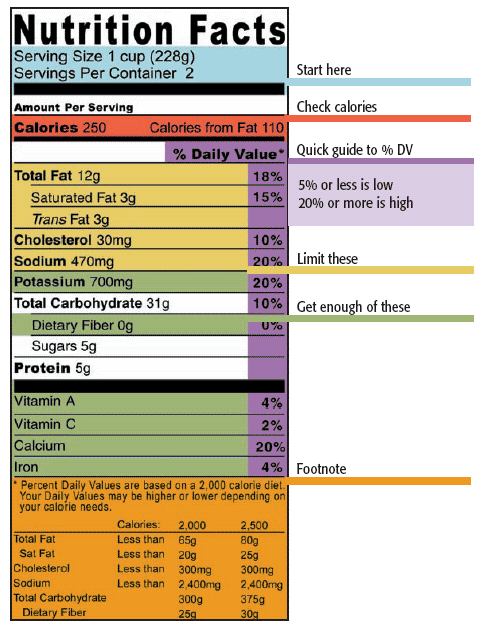
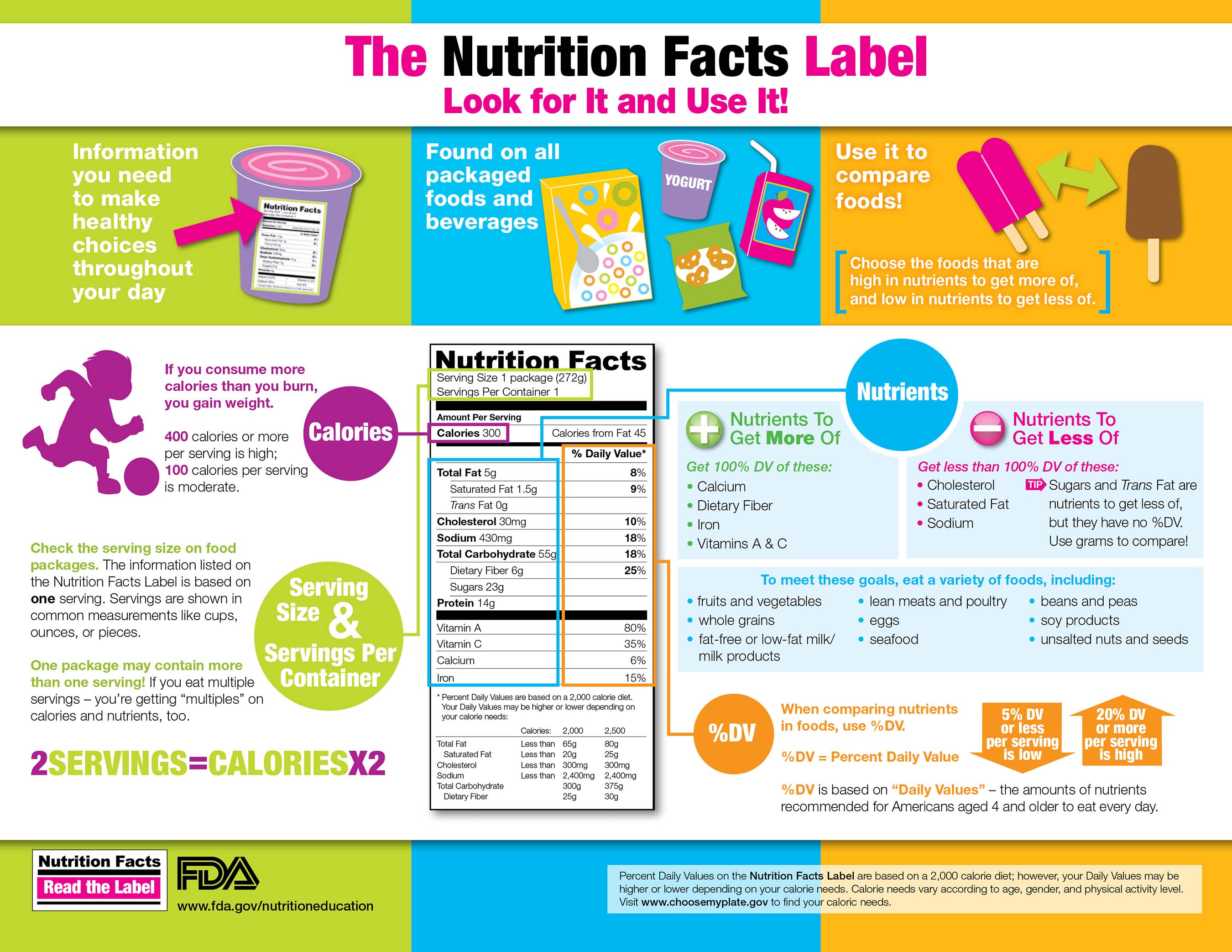

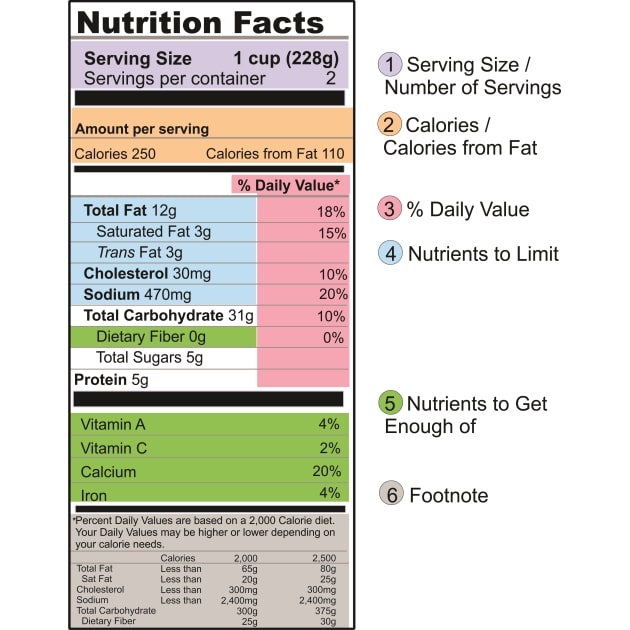

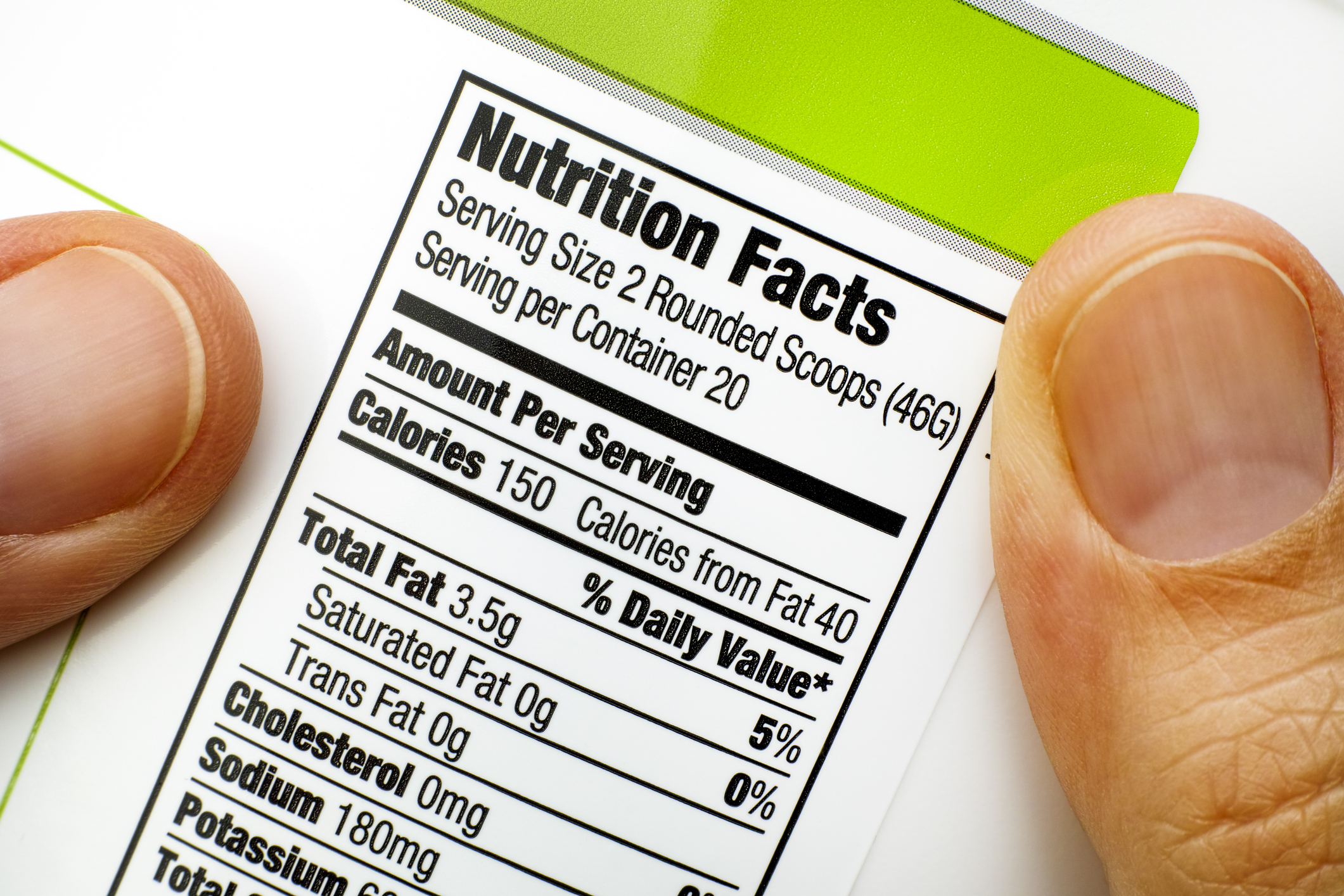
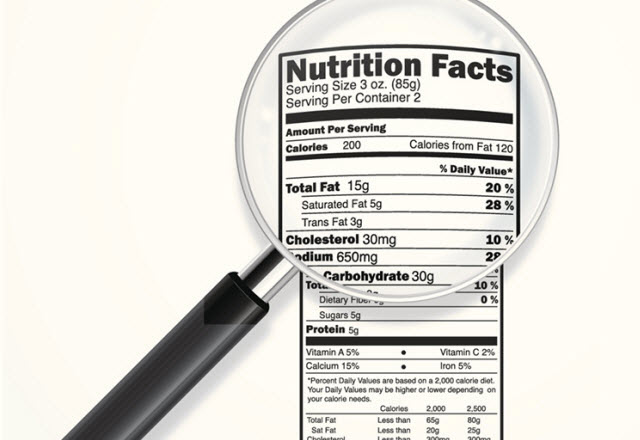


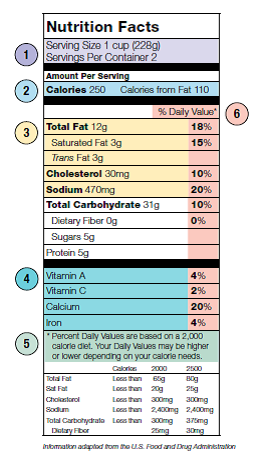



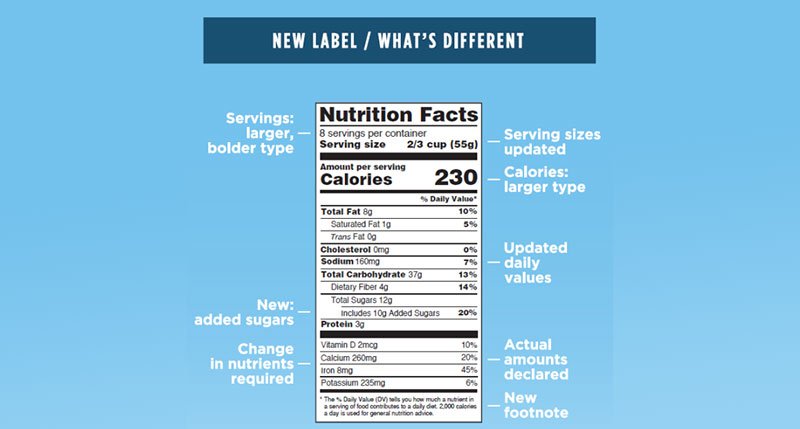
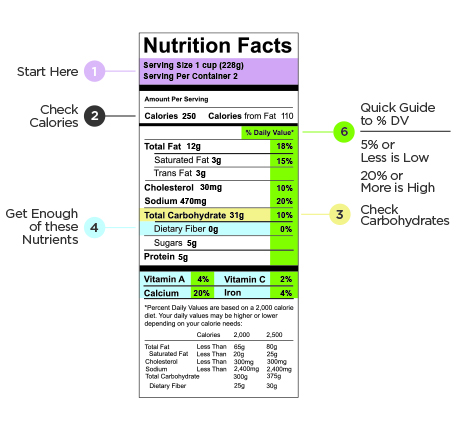


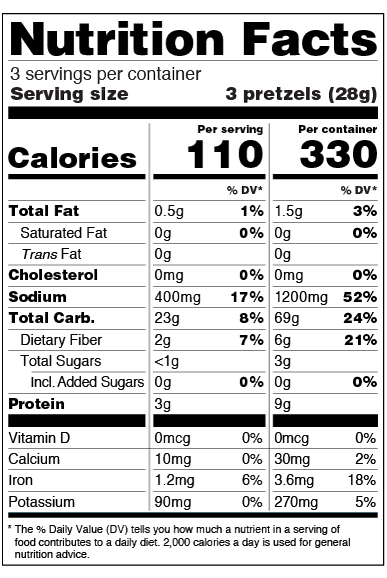
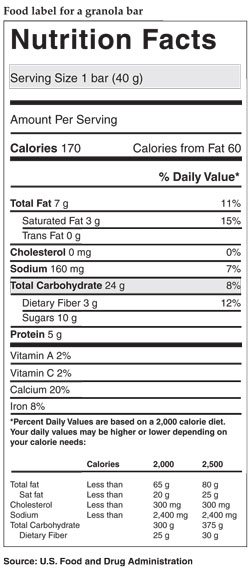



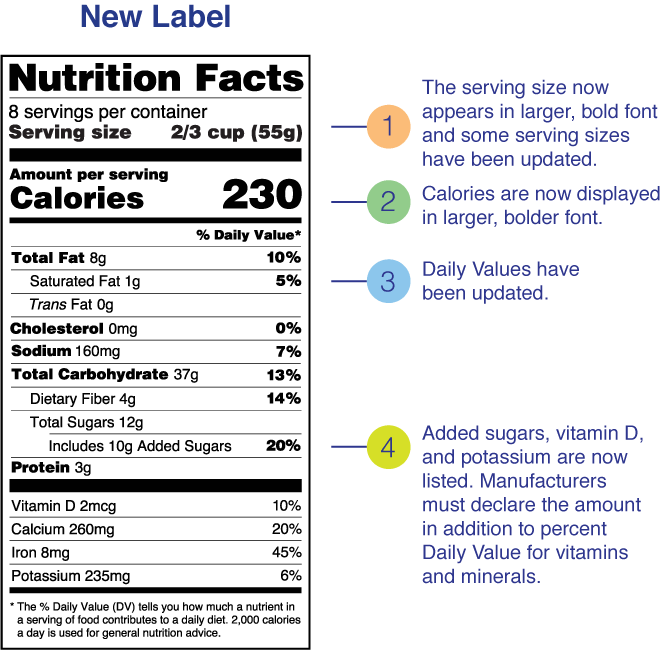





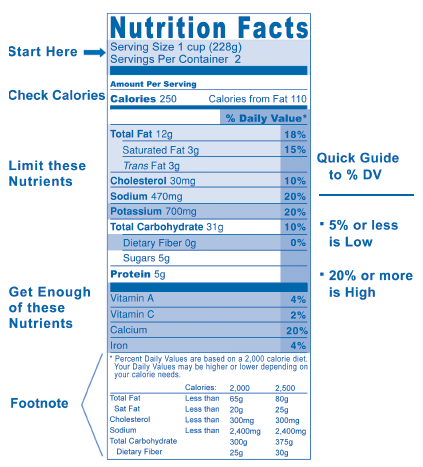

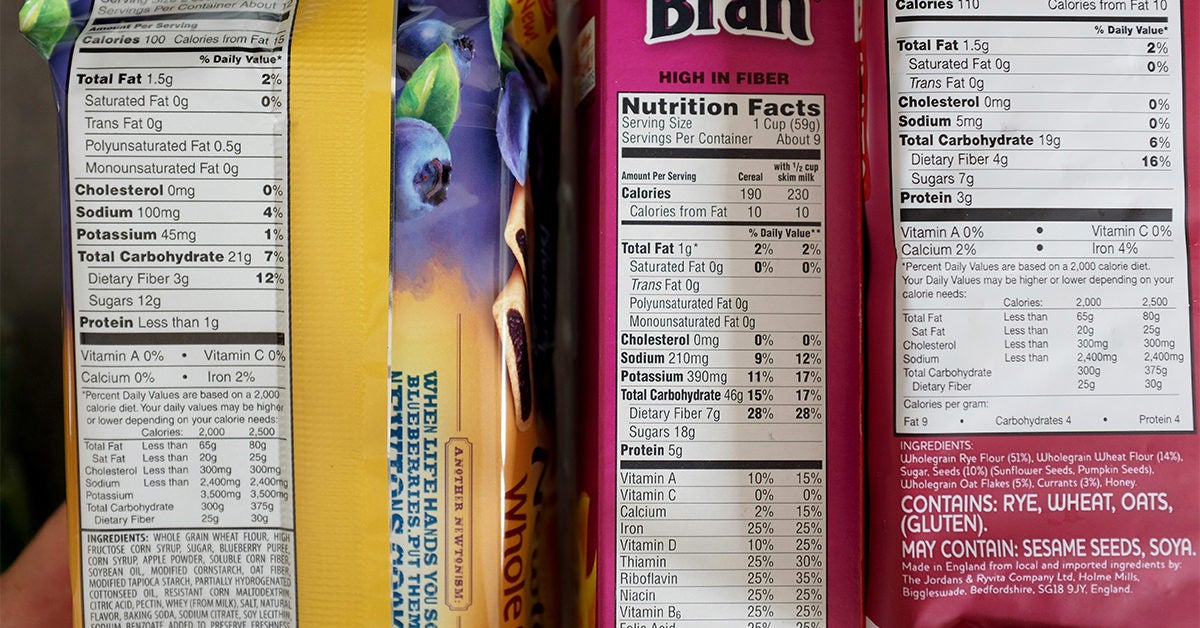
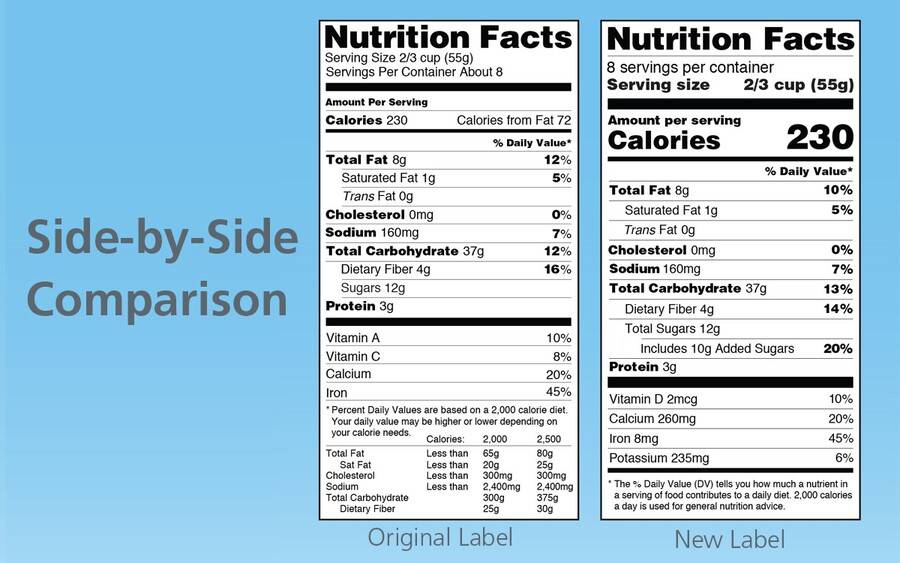


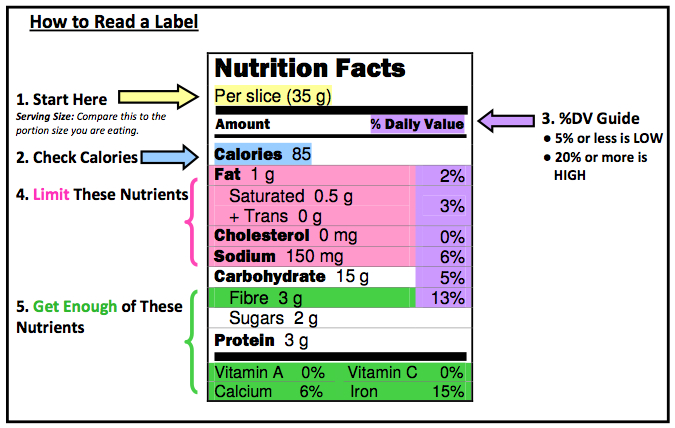
Post a Comment for "39 reading calories on food labels"